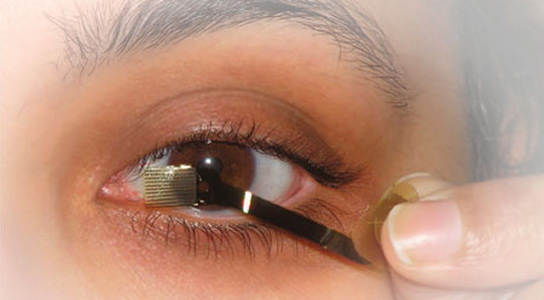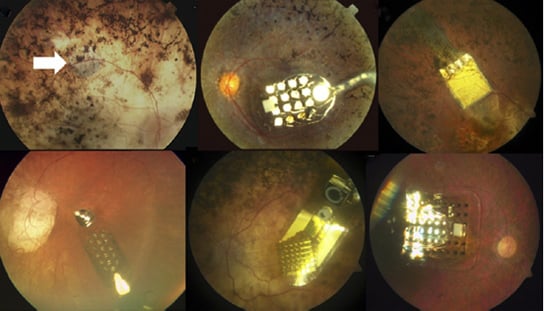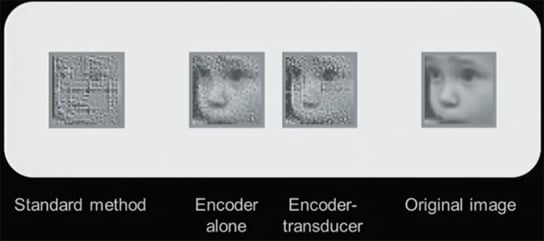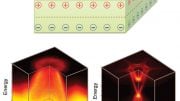
Prosthetic Retina
Neuroscientists have been able to create a prosthetic retina that was able to partially restore sight to blind mice. The device could be eventually adapted to do the same in human patients. Twenty million people worldwide have become blind due to the degeneration of their retinas, which from the back of the eye converts light into a neural signal.
Currently, there’s only one prosthetic approved for the treatment of this condition consisting of an array of surgically implanted electrodes that directly stimulate the optic nerve and therefore allowing patients to discern edges and letters. These enhanced patients cannot recognize faces or perform everyday tasks.

Sheila Nirenberg, a physiologist at the Weill Medical College at Cornell University in New York, hypothesized that the problem was down to coding. While the retina is as thin as a paper tissue, it contains several layers of nerves that encode light into neural signals. She thinks that once the code has been resolved, visual acuity might be restored.
Nirenberg and her student, Chethan Pandarinath, have come up with a code and developed a device that was able to restore some sight in blind mice. They published their findings in the journal PNAS. They began the process by injecting nerve cells into the retinas of mice with a genetically engineered virus, which was designed to insert a gene that causes the cells to produce a light-sensitive protein normally found in algae. Once a beam of light was shown to the eye, this protein triggered the nerve cells to send signals to the brain, which is analogous to what a healthy rod and cone cell does.

Rather than feeding visual signals directly into the brain, they processed them using a code that the researchers had developed by watching how a healthy retina responds to stimuli. Once the mice had received the encoded input, the mice were able to track moving stripes, something that they couldn’t do before. Then, an ‘untranslate’ code was used to figure out what the brain was supposed to be seeing. This image was clearer and more recognizable than a previous, non-encoded image.
This encoding had been debated among scientists working on these kinds of visual prostheses. Some think that the brain could adapt in time to an unprocessed signal. For now, it’s not possible to determine how effective this technique will be in human patients, but this will be revealed when the system is tested in human trials. The encoding is simple enough to be done by one microchip, which would be paired with a small camera mounted on a pair of glasses. The camera would record a signal, which would be then encoded and flashed into genetically treated nerve cells in the eyes.
Reference: “Retinal prosthetic strategy with the capacity to restore normal vision” by Sheila Nirenberg and Chethan Pandarinath, 13 August 2012, Proceedings of the National Academy of Sciences.
DOI: 10.1073/pnas.1207035109









While a 16 x16 array may be good enough for farmer’s wife recognition , carving knife avoidance will require at least 64×64 photoreceptors.